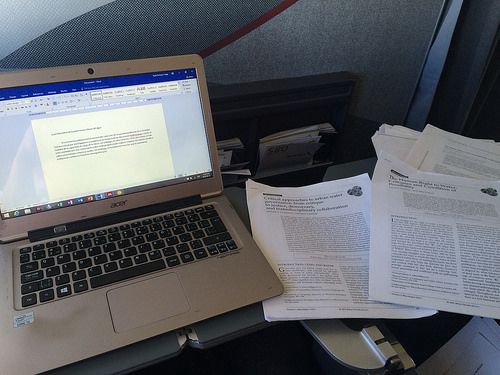The literature review, often a cornerstone of academic research, can be a daunting task. It’s not simply a summary of existing work; it’s a critical analysis, synthesis, and evaluation of the current state of knowledge on a specific topic. A well-crafted literature review not only showcases your understanding of the field but also lays the foundation for your own research question and contributes to the ongoing conversation within your discipline.
1. Start with a Clear Focus and Scope:
The key to a successful literature review is clarity. Before you begin, define your research question or thesis statement. This acts as a compass, guiding your search and ensuring that every source you include directly contributes to answering your inquiry. For instance, a nursing literature review could focus on the effectiveness of a specific intervention for managing pain in hospitalized patients.
2. Develop a Strategic Search Strategy:
Once you have a clear focus, you need a robust search strategy to identify relevant sources. Explore multiple databases, such as PubMed, Nursing Papers, CINAHL, and Google Scholar, using a combination of keywords, Boolean operators, and filters. Remember to consult with a librarian for guidance on advanced search techniques and database-specific tips.
3. Evaluate and Select Quality Sources:
Not all sources are created equal. Look for peer-reviewed journal articles, books, and reputable online resources. Carefully assess each source based on its relevance, reliability, and currency. Consider factors like author credentials, publication date, and the study’s methodology.
4. Organize Your Findings: Beyond Chronological Order:
While a chronological approach can be helpful, consider more sophisticated methods for organizing your nursing literature review. Group sources by theme, methodology, or theoretical perspective. This allows you to identify key debates, trends, and gaps in the existing literature.
5. Synthesize and Analyze: Go Beyond Simple Summarization:
The real value of your nursing literature review lies in your analysis and synthesis of the existing literature. Don’t merely summarize each source. Instead, identify key findings, compare and contrast different perspectives, and explore potential inconsistencies or contradictions.
6. Identify Gaps and Research Opportunities:
A well-structured literature review not only summarizes the current state of knowledge but also highlights gaps and areas that require further investigation. This is crucial for justifying your own research question and demonstrating the significance of your study.
7. Embrace Critical Analysis: Question Assumptions and Methods:
A literature review is not simply a passive compilation of facts. It requires critical thinking and the ability to question the assumptions and methodologies employed by other researchers. Ask yourself:
- What are the limitations of the studies you’ve reviewed?
- Do the methodologies employed adequately address the research question?
- What potential biases or confounding factors might influence the findings?
8. Use Effective Citation and Formatting:
Maintain consistency in your citations and formatting using a specific style guide (e.g., APA, MLA, Chicago). Accurate citations are crucial for giving credit to the original authors and for providing readers with the necessary information to locate the sources you’ve used.
9. Ensure Clarity and Conciseness:
Your literature review should be written in a clear, concise, and accessible style. Avoid jargon and technical terms that might confuse the reader. Use effective transitions and headings to guide the reader through your argument.
10. Demonstrate Your Expertise: Show Your Depth of Knowledge
The quality of your literature review is a reflection of your expertise in the field. Demonstrate your understanding of the key concepts, theories, and debates within the discipline. Use your own voice and provide insightful commentary on the sources you’ve reviewed.
11. Engage with Your Audience:
Remember that your literature review is intended for a specific audience, likely your peers and potential mentors. Tailor your writing style and level of detail to their knowledge and expectations.
12. Revise and Refine: Polish Your Work
Like any academic writing, your literature review requires careful revision and editing. Ensure clarity, consistency, and conciseness in your writing. Seek feedback from peers or mentors to identify areas for improvement.
13. Embrace the Iterative Process:
The literature review is often an iterative process. As you delve deeper into your research, you may discover new sources or uncover additional gaps in the literature. Don’t be afraid to refine your search strategy, revise your organization, and update your analysis as needed.
Writing a Compelling Nursing Literature Review
In nursing literature review, the focus often lies on translating research findings into practical applications for patient care. Consider the following additional tips:
- Focus on clinical relevance: Ensure your sources directly relate to the clinical practice of nursing and address real-world challenges faced by nurses and patients.
- Integrate evidence-based practice: Highlight studies that provide strong evidence for effective interventions, diagnostic tools, or care strategies.
- Address ethical considerations: Acknowledge and discuss ethical issues related to the research topic, such as patient confidentiality, informed consent, and the potential risks and benefits of interventions.
- Consider patient perspectives: Include research that explores the patient experience, their perceptions of care, and their preferences for interventions.
- Link to nursing theory: Connect your findings to relevant nursing theories and frameworks to provide a theoretical foundation for your analysis.
The Bottom Line
Crafting a literature review that stands out requires careful planning, critical thinking, and a deep understanding of your chosen research topic. By following these tips, you can ensure that your literature review is comprehensive, insightful, and a valuable contribution to the ongoing dialogue within your field. Remember, a well-crafted nursing literature review not only strengthens your research but also contributes to the advancement of knowledge and the improvement of patient care.






